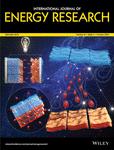Bioaugmented polyaniline decorated polylactic acid nanofiber electrode by electrospinning technique for real wastewater-fed MFC application
Funding information: Taiwan MOST, Grant/Award Numbers: 106-2923-E-197-001-MY3, 107-2221-E-197-022-MY3, 108-2622-E-197-002-CC3, 108-2221-E-197-015-MY3
Summary
Bioaugmentation is considered a potential tool to boost the performance of microbial fuel cells (MFCs) by modifying electrodes with biopolymers. However, research on biopolymers in MFCs to treat real wastewater is very limited. Polylactic acid (PLA) is a biopolymer obtained from renewable feedstock, extensively being used in the form of nanofibers due to its biocompatible nature, while polyaniline (PANI) is a favorite candidate for electrode modification in MFC under its good electrical conductivity and stability. Interestingly, PANI-based degradable nanofibers are known to support cell adhesion and proliferation. The current work is, therefore, aimed at finding a new environmentally benign composite material using electrospun PLA nanofiber decorated with in situ polymerized PANI. The resultant PANI/PLA electrode was tested for its efficacy as anode with domestic wastewater-fed MFCs against conventional graphite felt. The flexible anode outperformed the flat graphite felt anode displaying a 92.32% decrement in charge transfer impedance and 8-fold increase in maximum power density with excellent cell adherence under which simultaneous COD removal of 91.7% was also achieved. The present study has successfully added a new dimension to the design of sustainable anode material to enhance microbial binding and achieve high power output, revealing the enormous potential of biopolymer-based MFCs in the future. By switching to the biopolymer flexible electrode that rivals its traditional polymers, the MFCs demonstrate promise to be a vital tool accessible in the remotest part of the world lacking electrical infrastructure for simultaneous clean water and electricity generation.
Highlights
- 8-fold increase in power density in real wastewater-fed MFCs using novel PANI/PLA anode.
- 91.7% COD removal from domestic wastewater using mediator-less MFCs.
- Pseudocapacitive nature displayed by the biopolymer-based anode.
- Enhanced bio-synergistic interaction between wastewater-borne microbial biofilm and bioaugmented anode.
CONFLICT OF INTEREST
The authors declare no conflict of interest.
Open Research
DATA AVAILABILITY STATEMENT
Data sharing is not applicable to this article as no new data were created or analyzed in this study.




